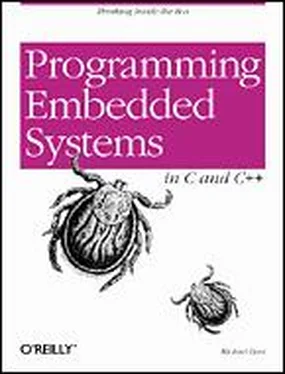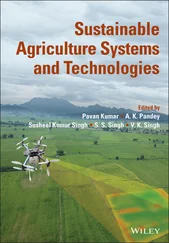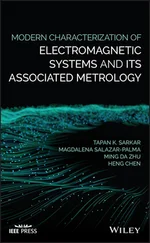Rosenberg, Jonathan B. How Debuggers Work: Algorithms, Data Structures, and Architecture . New York: John P. Wiley & Sons, 1996.
If you've ever wondered what a debugger looks like on the inside, this book is for you. It will also give you a better understanding of the split between debugger and debug monitor and the potential for interference between the debugger and your programs.
Satir, Gregory, and Doug Brown. C++: The Core Language . Cambridge, Mass.: O'Reilly & Associates, 1995.
An excellent introduction to C++ for competent C programmers. If you don't already have a C++ book that you like, try this one.
Van der Linden, Peter. Expert C Programming: Deep C Secrets . Englewood Cliffs, N.J.: Prentice-Hall, 1994.
Written by a member of Sun Microsystems' compiler development team, this book helps to fill the gaps in knowledge between an ordinary C programmer and a guru. Although not entirely necessary, an understanding of these advanced topics can only make you a better embedded programmer. This book is an excellent reference as well as an entertaining read.
Van Sickle, Ted. Programming Microcontrollers in C . Solana Beach, Calif.: HighText Publications, 1994.
Like many of the embedded programming books that I've found, this one is specific to a particular processor family. However, because the book is well written and Motorola's microcontrollers are quite popular, some readers will still find it useful.
12.2 Magazines and Conferences
Embedded Systems Programming
A monthly publication devoted specifically to the issues embedded software developers face on the job. Every article and column is packed with practical advice and written in a casual style familiar to readers of this and other Nutshell Handbooks. I highly recommend that everyone reading this sentence immediately put my book down and take a few minutes to sign up for a free subscription at http://www.embedded.com/mag.shtml. It usually takes several months to get going, but is well worth the wait.
In addition, you might want to purchase a copy of the CD-ROM archive. This searchable database contains hundreds of past articles and columns and was an indispensable reference in the creation of this book. More information is available at http://www.embedded.com/cd.htm.
Embedded Systems Conference
A technical conference hosted several times each year by the publishers of the magazine just described. The conference has been running for about 10 years, and the number of exhibitors and attendees continues to grow each year. The knowledge to be gained here far outweighs the cost of traveling to the conference and attending the classes. I try to go as often as I can.
Chip Directory ( http://www.hitex.com/)
An unbelievably large collection of information about common processors and peripherals. This is not the only such site on the Web, but it is one of the best maintained and it has links to many of the others.
CPU Info Center ( http://bwrc.eecs.berkeley.edu/CIC/)
Tons of information about new and old processors alike. Includes a section specifically about common embedded processors.
CRC Pitstop ( http://www.ross.net/crc/)
A site dedicated to information about CRC implementation, including Ross Williams' "Painless Guide to CRC Error Detection Algorithms." The latter is the most readable explanation of CRC calculations I've ever found.
Electronic Engineers' Toolbox ( http://www.eetoolbox.com/ebox.htm)
Focused on embedded systems, real-time software development issues, and Internet-enabling technologies, the "EE Toolbox" is designed to make your job easier. The publishers of this site have identified, indexed, and summarized thousands of relevant Internet resources and brought them all together in one place.
Embedded Intel Architecture ( http://www.intel.com/design/intarch/)
Intel's home page for their embedded processor line, including the 80188EB. In addition to technical information about the hardware, there are also free development and debugging tools and example source code listings.
news:comp.arch.embedded
A newsgroup devoted to many of the topics discussed in this book. Discussions frequently involve software development tools and processes, comparisons of commercial real-time operating systems, and suggestions for processor selection criteria.
news:comp.realtime
Another good newsgroup for embedded systems discussion. This one tends to focus more heavily on real-time scheduling issues, however, so not all of the information is relevant. A list of FAQs from this group can be found at http://www.faqs.org/faqs/by-newsgroup/comp/comp.realtime.html.
Our look is the result of reader comments, our own experimentation, and feedback from distribution channels. Distinctive covers complement our distinctive approach to technical topics, breathing personality and life into potentially dry subjects.
The insects on the cover of Programming Embedded Systems in C and C++ are ticks. There are approximately 850 species of these small to microscopic, blood-feeding parasites distributed worldwide. They are particularly abundant in tropical and subtropical regions. There are two main families of ticks: hard ticks, whose mouth parts are visible from above, and soft ticks, whose mouth parts are hidden.
In both hard and soft ticks, the mouth is made up of three major parts: the palps, the chelicerae, and the hypostome. It is the hypostome that is inserted into the host's skin while the tick is feeding. A series of backward-facing projections on the hypostome make it difficult to remove the tick from the skin. Most ticks also secrete a sticky substance that glues them into place. This substance dissolves when the tick is done feeding. Their external body surface expands from 200 to 600 percent to accommodate the blood that is ingested.
Ticks go through three life stages: larva, nymph, and adult. At each stage they feed on a mammal, reptile, or bird host. Ticks wait for a host by perching on leaves or other surfaces with their front two legs extended. When a host brushes up against them they latch on and attach themselves. Adult female hard ticks lay a single batch of thousands of eggs and then die. Adult male ticks also die after a single mating.
As parasites go, ticks can be very nasty. They transmit more disease than any other blood-sucking parasite, including Lyme disease, Rocky Mountain spotted fever, and relapsing fever. They can also cause excessive blood loss. Some ticks secrete nerve poisons that can potentially cause death. A tick can be removed from skin by grasping it with a tweezer or a special tick-removing device as close to the skin as possible, and pulling in one steady motion. Do not squeeze the tick. Immediately flush it down the toilet — or place it in a sealed container and hold onto it for one month, in case you develop symptoms of a disease.
Melanie Wang was the production editor and proofreader for Embedded Programming Systems in C and C++ . Sheryl Avruch was the production manager; Paulette A. Miley was the copy editor; Nancy Kotary and Madeleine Newell provided quality control. Seth Maislin wrote the index.
Edie Freedman designed the cover of this book, using a 19th-century engraving from the Dover Pictorial Archive. The cover layout was produced with QuarkXPress 3.3 using the ITC Garamond font.
The inside layout was designed by Edie Freedman and implemented in FrameMaker by Mike Sierra. The text and heading fonts are ITC Garamond Light and Garamond Book. The illustrations that appear in the book were created in Macromedia Freehand 7.0 by Robert Romano. This colophon was written by Clairemarie Fisher O'Leary.
Читать дальше












